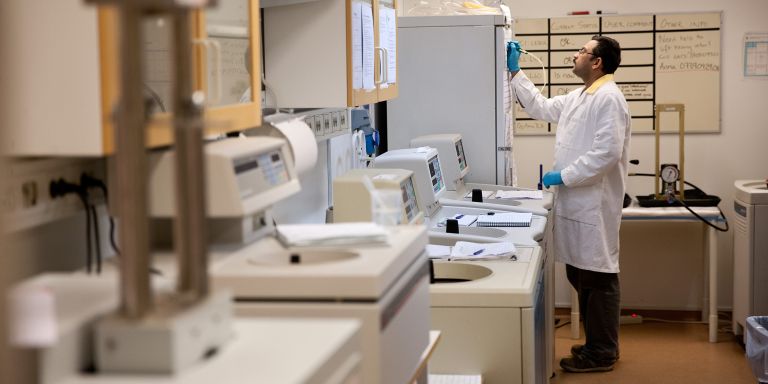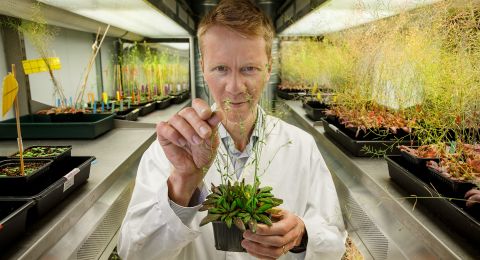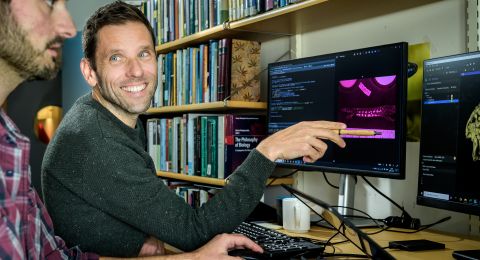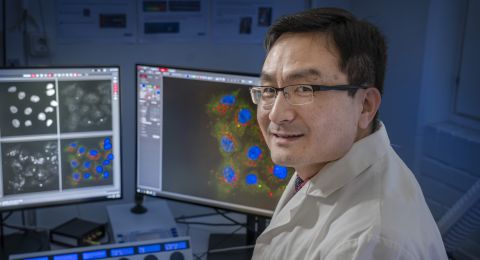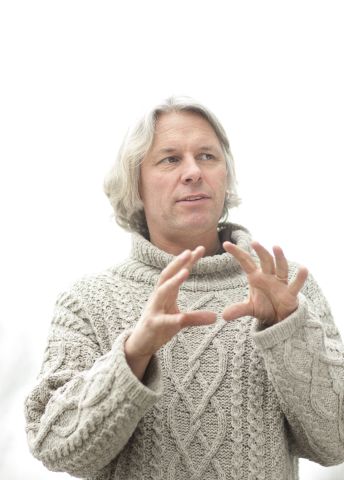
Project Grants 2012
Coherent cytoskeleton dynamics captured with cutting Edge X-ray methods
Principal investigator:
Richard Neutze, Professor of Biochemistry
Co-investigators:
University of Gothenburg
Gergely Katona
Thomas Nyström
Andrew Ewing
Kristina Hedfalk
Chalmers University of Technology
Jan Swenson
Jan Stake
Institution:
University of Gothenburg
Grant in SEK:
SEK 38.9 million over five years
Living cells are a wonder of organization. In their interior, there are tens of thousands of different molecules that control the complex chemistry required for life and there are different areas that control various activities. All genes are stored in the cell nucleus, for instance, and the expression of proteins within the cell is controlled from there. Energy is generated in the mitochondria and old, damaged molecules are broken down in the lysosomes, a bit like a garbage dump. Other areas, with other functions, are called golgi, endoplasmic reticuli and peroxisome.
To be able to maintain this fantastic organization the cell has a skeleton, called a cytoskeleton, which also works as a transport pathway between various parts of the cell. It looks like a finely meshed network that runs from the cell's nucleus in the center all the way out to the outer membrane of the cell. The cytoskeleton is built of two different proteins called actin and tubulin; these two building blocks form long fibers. The skeleton's shape is not static, but instead is constantly being changed and rebuilt according to the needs of the cell.
“The cytoskeleton grows and collapses the entire time,” says Richard Neutze, Professor of Biochemistry at the University of Gothenburg.
Long-shot - but with great potential
Although the cytoskeleton is an important part of the cell, it is not completely understood how the skeleton's dynamics are controlled and evolve. Now, using financing from the Knut and Alice Wallenberg Foundation, six researchers at the University of Gothenburg and Chalmers University of Technology are initiating a project with the goal of gaining a better understanding of structural changes within the cytoskeleton. Coordinator Richard Neutze calls the project a “long shot”. But his intuition as a researcher tells him that these long fibers should be able to resonate like strings on a guitar. He believes that vibrations in the cytoskeleton could rapidly spread throughout the cell and that these vibrations could potentially help to regulate the cell's well-oiled machinery.

A new tool box to study the cell skeleton
To test this hypothesis, the Gothenburg researchers will put together a new molecular biology tool box, especially designed to study the cytoskeleton. An important part of this tool box will be pioneering techniques to visualize proteins and their dynamics at very high resolution. But the first challenge will be to try to get the skeleton to vibrate. Here, the researchers intend to use high-frequency electromagnetic radiation of various wavelengths, including microwaves like those emitted by our mobile phones. Today, whether or not radiation from mobile phones can affect cells is often debated. But Richard Neutze wants to investigate, at a molecular level, how any effects other than heating may arise. Electromagnetic waves may, in purely theoretical terms, also be able to become resonant with the cytoskeleton and make it vibrate.
“I believe that it is possible that the radiation also affects the cytoskeleton, but this is still pure speculation,” says Richard Neutze.
This interesting and somewhat controversial issue is a side track in the project, he emphasizes. The actual question is if it is possible at all to get the cytoskeleton to vibrate.
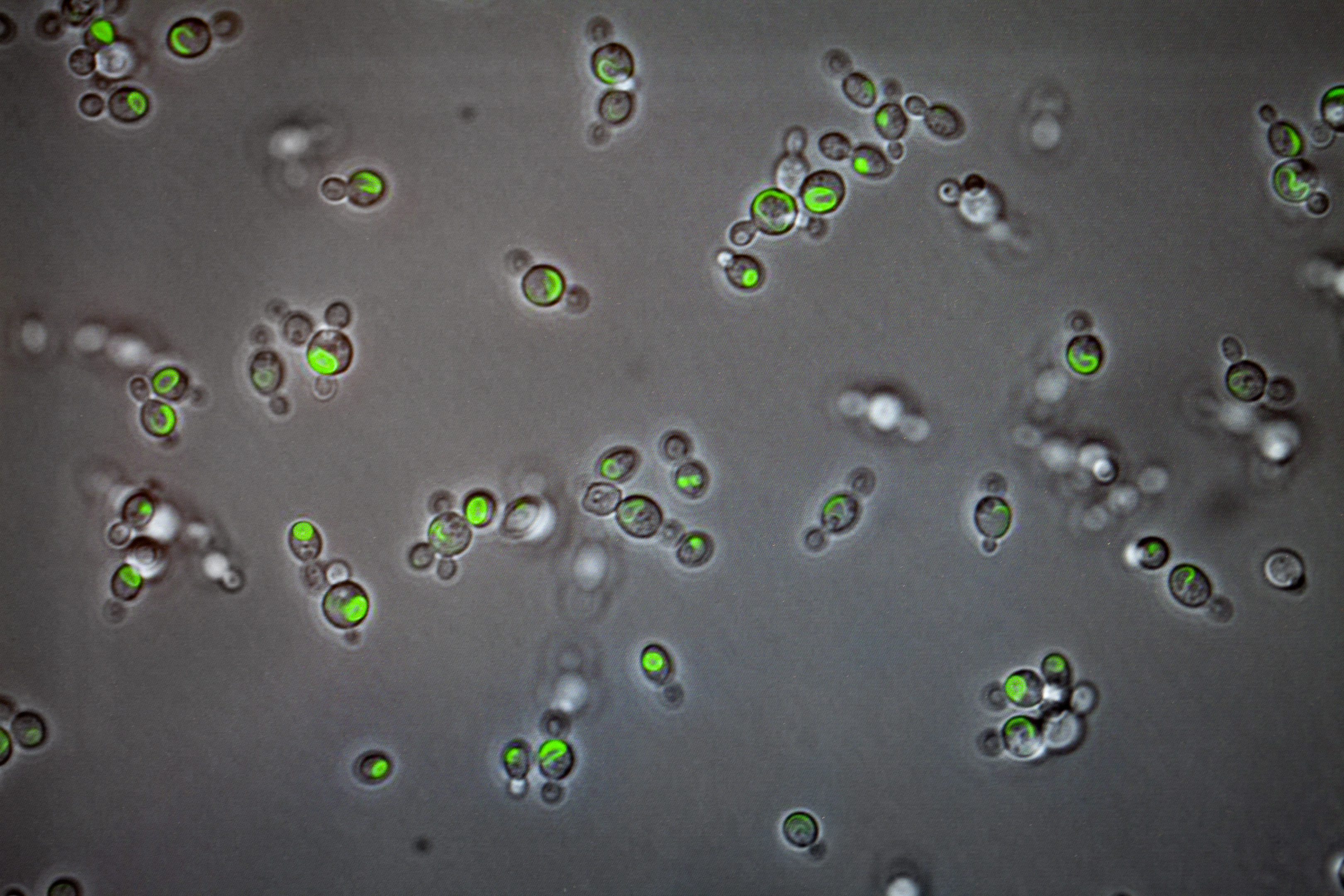
Two years to determine if the project has potential
The financing that the Gothenburg researchers have received from the Knut and Alice Wallenberg Foundation comes with one condition: within two years they must demonstrate that they can affect the cytoskeleton and that this is done through other mechanisms than pure heating. To achieve this, they will use special yeast cells that contain temperature-sensitive proteins. At a certain temperature, these proteins lump together. What the researchers hope is that electromagnetic radiation will affect the actual cell skeleton without its temperature-sensitive proteins forming clumps. If so, this could prove that the radiation initiates changes in the cytoskeleton, without the cell having been warmed up.
If the researchers succeed in this, they will have another three years of financing so that they can research the cytoskeleton's dynamics and how it affects important processes within the cell. Among other things, neurotransmitters, substances that transmit nerve signals from one cell to another, are transported with the help of the cytoskeleton. The researchers also believe that certain functional tasks performed by the cytoskeleton can be related to aging and they want to explore that track further.
If the Gothenburg researchers achieve their long-shot goal, they will open the door to an entirely new research field that has the potential to change our understanding of the cell and how life works.
Text Ann Fernholm
Translation Semantix
Photo Magnus Bergström
